Table of contents
What are Odin's Runes?
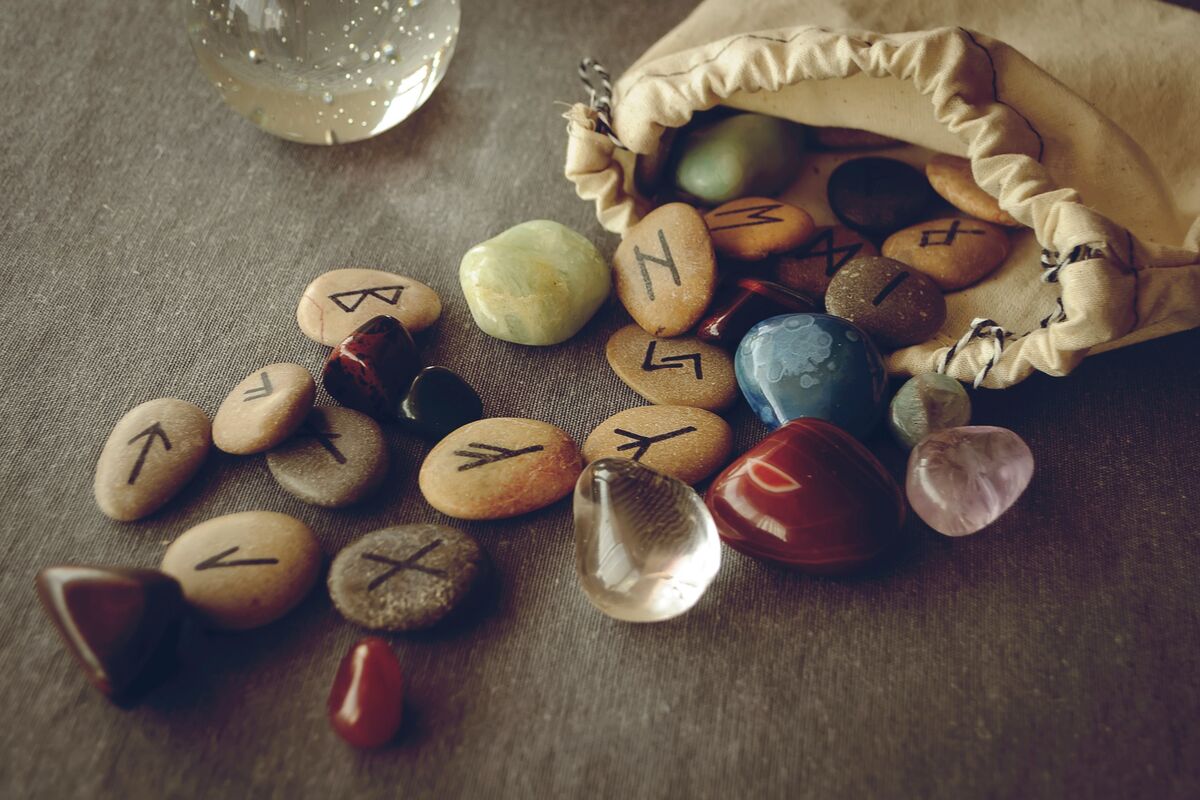
The Odin Runes are an oracular system based on the alphabet used by the Germanic peoples. The set of runes is called Futhark, named after the initials of the names of the first 5 runes that make up this alphabet, namely Fehu, Thurisaz, Ansuz, Raido and Kennaz.
Originally, they were used to write words and short phrases in the language of these peoples. But since the late 20th century, they have been used as divinatory methods and instruments of magic.
When using runes as a divinatory system, you can use the classic model with 24 runes or a more modern version with one more rune, known as white rune or Odin's rune. This article deals with the first case.
In it, we briefly introduce the secrets of this powerful oracle, starting from its historical and mythological origin, and then presenting its divinatory meanings and how to use it.
Understanding Odin's Runes
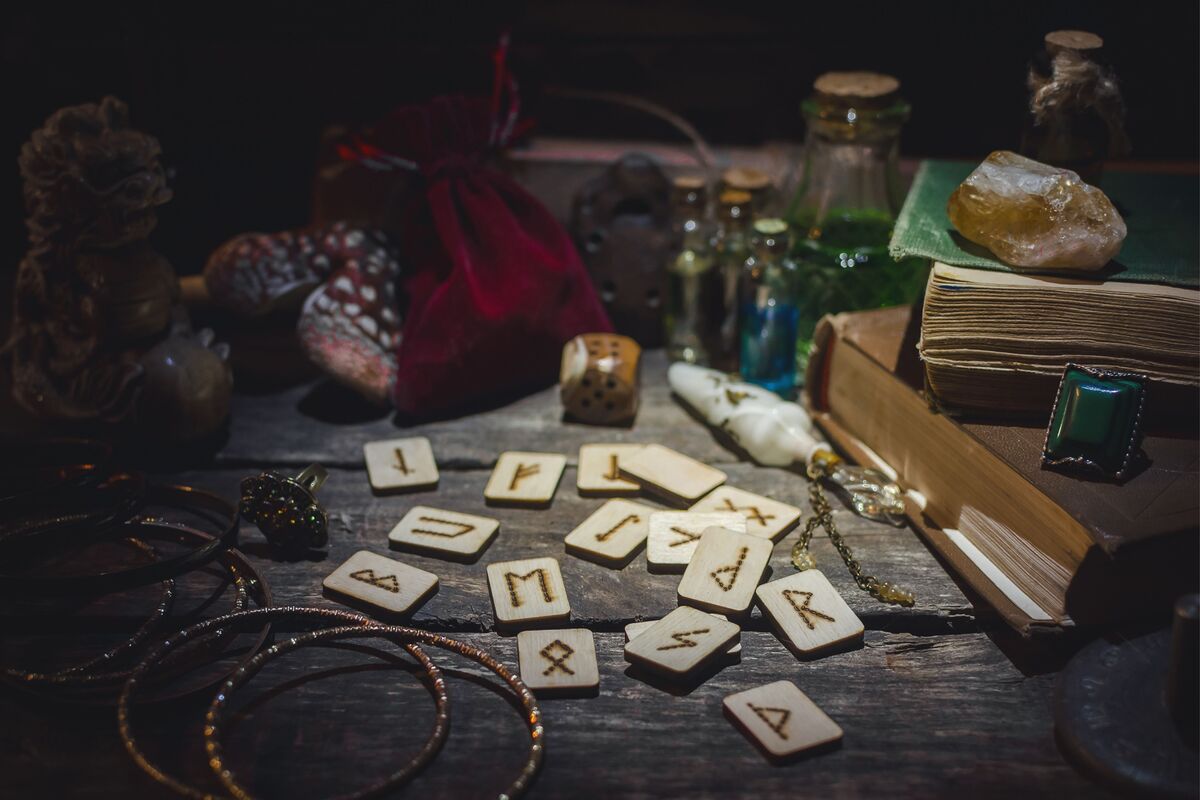
The Odin Runes were brought to mankind by the god in his name, according to the Havamál. This would be a Norse poem that can be loosely translated as "The Proverbs of the Most High". Read on to understand its history and how Odin gained access to its wisdom.
Origin and history
Runes, as a writing system, probably originated in the second 2nd century before the Common Era. Linguists, historians and archaeologists consider that runes developed from ancient italic letter systems. These same scholars also attribute to the name rune a great deal of uncertainty.
According to some hypotheses, the name rune is associated with mystery, secret or whisper. Although they are currently used as an oracular system, there is little or no historical evidence to indicate that they were used for this purpose. Therefore, their esoteric and oracular use is much more recent.
Mythology
The mythology about the origin of the runes is present in the poem Havamál, one of the poems included in the Poetic Edda, a collection of poems in Old Norse preserved in the 13th century medieval Icelandic manuscript Codex Regius. According to the mythological view, the secrets of the runes involve the myth of Odin's sacrifice in the tree of life, Yggdrasil.
According to this myth, Odin hung himself from Yggdrasil for nine days and nine nights to access the ancestral wisdom of the runes that would appear to him on the trunk of the tree. From Odin's sacrifice, the runes, then, could be transmitted to men, who know them until today.
How to play Odin's Runes?
To play Odin Runes, you will need to know their meanings. In addition, each rune has a phonetic value. As such, together they can form words, so you must know them in order to interpret them correctly, using your intuition.
In general, runes work by bringing images or concepts linked to each element carved into their symbols. There are different methods of drawing runes.
The simplest is to draw a rune to answer a yes or no question. More complex methods involve drawing them in multiples of 3 or, at the very least, in odd numbers. Although rune symbolism has a historical root, much of the meanings we use today were developed by the Western esoteric system.
It is therefore important to read their origins and their modern interpretations, as it is only recently that they have gained popularity as an oracular system.
First group
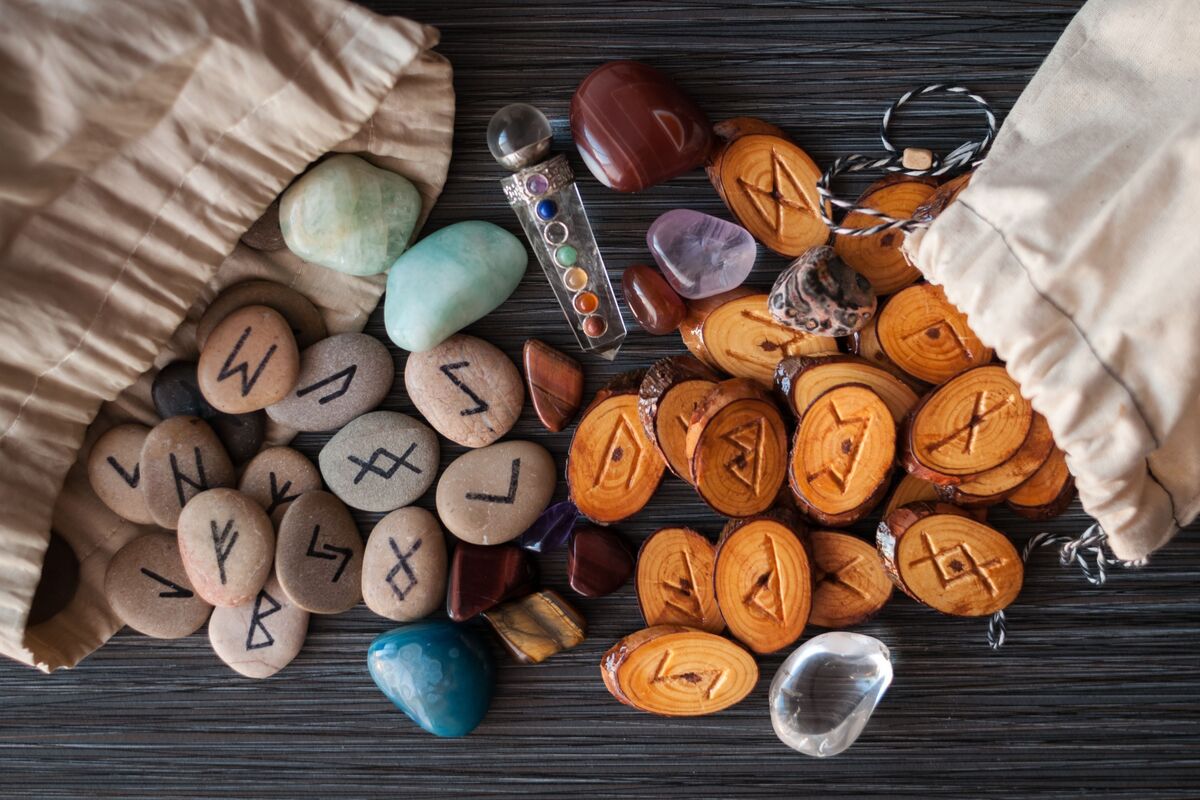
The runes are divided into groups of eight, and each one is called aett. The first Group is ruled by Fehu, the rune linked to materiality. Understand the meaning of the first group of runes below!
What is the first group?
The first group of 8 runes describes the forces of the creation process and is ruled by Freyr. According to Norse mythology, Freyr was a god of the group called Vanir, which represented deities related to agriculture and the land.
Freyr is the son of Njörd and brother of Freya, the goddess of love and battles. Thus, because he represents peace, fertility and rain, Ferya is linked to necessity. The first Aett is formed by the runes Fehu, Uruz, Thurisaz, Ansuz, Raidho, Kenaz, Gebo and Wunjo.
Runa Fehu
Fehu is the first rune of the first group and means abundance, material wealth and opportunities. Its name is linked to cattle, a fact that corroborates its connection with wealth, since in ancient Europe, owning cattle was a sign of property and wealth.
However, the energy of this rune is closely linked to mobile wealth and financial success in the near future. In addition, this rune embodies the basic force of fertility and can be related to social success, luck and creation.
When it appears in the inverted position, Fehu indicates loss of material possessions or income, self-esteem problems or material dispute.
Rune Uruz
Uruz, the second rune of the first group, represents the aurochs, a European savage that is extinct and is linked to oxen, known as aurochs. Its meaning is linked to strength, courage, endurance, dedication, perseverance, motivation and hard work.
Her appearance also heralds a positive period for obtaining energy, with a prediction of good health, agility, and increased vigor. Since aurochs were strong animals, she also indicates increased virility and power.
In the inverted position, Uruz indicates illness or gradual loss of health, sexual impotence, submissiveness or even an energetic block and lack of organization.
Runa Thurisaz
The Thurisaz rune represents Mjöllnir, the hammer of Thor, the god of thunder. Its meaning is about the power to direct your energies to defense, attack or destruction. Therefore, it appears indicating conflicts or battles ahead.
Because it possesses within itself the masculine and feminine polarities, Thurisaz also represents the energy of life and death, for it carries the essence of lightning, whose power can bring about regeneration and fertilization.
In addition, when it appears in the inverted position, watch out, because it is an indication of vulnerability, compulsion or even betrayal. Increase your defenses, because danger may be near.
Runa Ansuz
Ansuz, the fourth rune of the first group, represents the mouth, so when it appears in a reading, it points to issues related to communication.
Ansuz is also a symbolic representation of Odin's staff, his ancestral power and divine wisdom, so it indicates that it is important to pay attention because an important message is on the way.
Other meanings attributed to Ansuz are inspiration, wisdom, reception, revelation, wisdom, advice and enthusiasm. When it appears in the inverted position, Ansuz indicates false people, betrayal, misunderstandings, lies, communication problems and manipulation.
Rune Raidho
Raidho is the fifth rune of the first group and represents a wheel. It is associated with the cosmic law of the universe, the cycles of life and evolution. This rune speaks of change and travel, which can be a business trip or holiday, or even a spiritual journey where you will learn important lessons for your life.
From this journey, you will be able to understand the issues in your life as you can analyze them from a new perspective. Raidho is also the rune of action, change, movement, rhythm and perspectives.
In the inverted position, it signifies injustice, irrationality, disturbance, disruption and rigidity. Pay attention to the imbalance and change of direction your life is taking.
Runa Kenaz
Kenaz is the sixth rune of the first group and symbolizes a torch, so it signals a light that will guide your path and shed light on hidden facts, bringing them to the truth. When it appears, secrets will be revealed because you are going in the right direction to find the truth.
In addition, Kenaz is also associated with knowledge that dissipates the leftovers of ignorance and brings with it creativity, inspiration, vitality, as well as regeneration and the transforming energies brought by the element of fire. She is also related to the sexual instinct and the power of sex.
If it appears in the inverted position, Kenaz shows that there is lack of perspective in life or even creative block, false hope and instability.
Runa Gebo
The penultimate rune of the first group is Gebo. Its name means gifts or gifts and so it appears bearing the sign that you are endowed with many talents and blessings.
In addition, Gebo is also closely linked to generosity, charity, partnership, luck, balance, service and healthy relationships, as it indicates togetherness, including sex.
Under a more intense look, Gebo is the rune that indicates sacrifice. This is one of the runes that does not have an inverted position, since its shape resembles an 'X',
Runa Wunjo
Wunjo is the eighth and last rune of the first group. It is related to: well-being, comfort, celebration, community, happiness, festivals and concepts such as belonging, pleasure and success.
Its meaning is also associated with triumph, as well as happiness, security, stability and celebration. It is a sign of a harmonious time, with material and spiritual gains, in which it is possible to enjoy the delights of life.
However, in the inverted position, Wunjo denotes sadness, unhappiness, alienation and emotional loss.
Second group
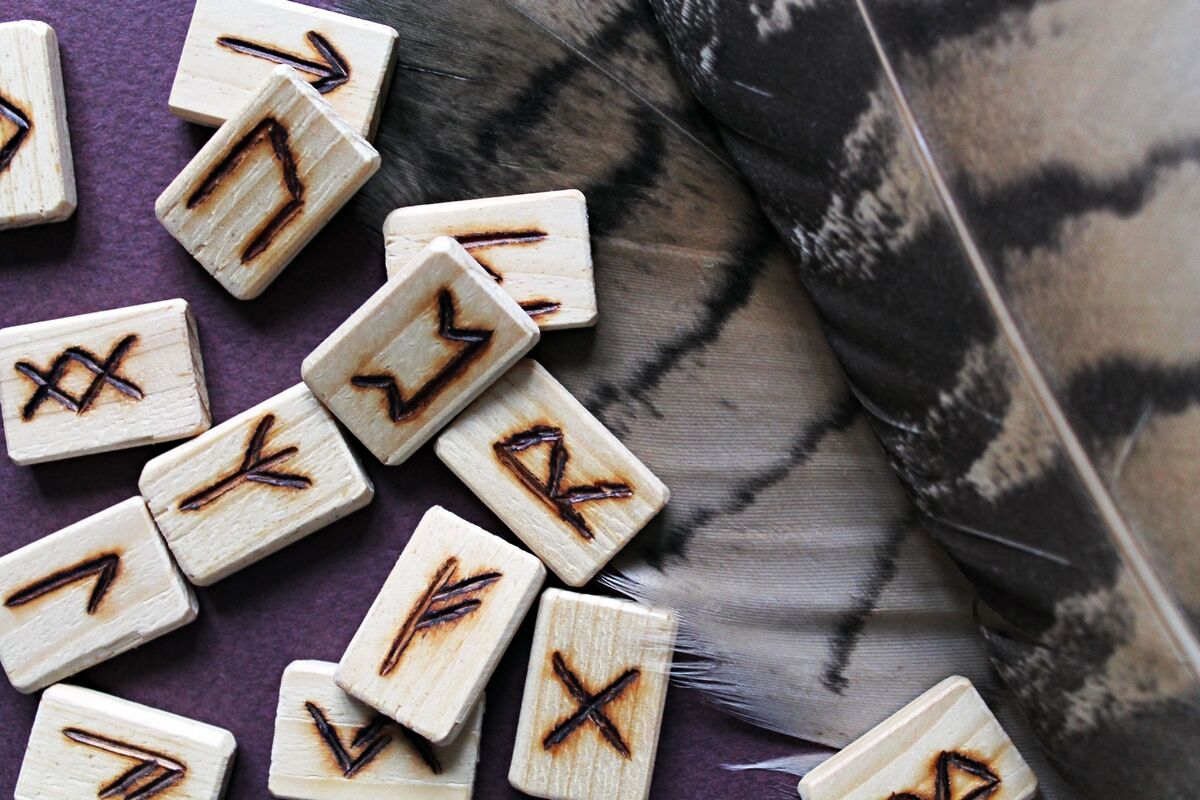
The second group of runes is called Heimdall's Aett. According to Norse mythology, Heimdall is the guardian of the gods who watches over the Bifröst bridge, which connects the abode of the gods, Asgarde Midagard, to Earth. Check their meanings below!
What is the second group?
The second group of runes comprises the passage of time and the forces of nature. It starts with Hagalaz, the destructive side of the female force, and follows with 3 runes representing the Norns, the goddesses who rule the present, the past and the future in Norse mythology.
This second set of 8 runes consists of Hagalaz, Naudhiz, Isa, Jera, Eihwaz, Perdhro, Sowulo and Algiz.
Runa Hagalaz
Hagalaz is the first rune of the second gruze and its name means hail. Due to this association, this rune indicates sudden change, as hail comes out of nowhere and ends up destroying crops.
Hagalaz has a strong feminine energy associated with destruction, uncontrollable forces, external influences and sudden change. It is common to associate the meaning of this rune with the Tarot card The Tower, as it indicates inevitable change, the results of which will depend on how one views these changes.
Moreover, it indicates changes in life that are about to happen to clear your path. Hence, it signifies evolution. Hagalaz belongs to the group of runes that does not have an inverted position.
Runa Naudhiz
The second rune of the second group is Naudhiz. It symbolizes necessity and shows the importance of reflection. When it arises, you need to ponder what is essential for you to feel good and stable in the most important areas of your life.
In addition, Naughiz indicates period of delays, disagreement, scarcity, need, resistance, restriction, and endurance, which will require you to be very patient. In the inverted position, it indicates stress, exhaustion, and even depression.
Runa Isa
Isa is the third rune of the second group, whose name means ice. When it appears, it indicates pause, like a kind of hibernation for the recovery of strength. This indicates that you have reached a period when you need to stop what you are doing to better understand what is happening and then be able to act through different angles.
In addition, Isa is associated with issues related to accumulation, delay, ego, blockages, waiting, frustration, pause, stillness and suspension of activities. Its meaning is also linked to emotional and psychological blockages caused by external influences.
For this reason, it is commonly equated with the Hanged Man card in the Tarot. Due to its shape, this rune does not have an inverted position.
Runa Jera
The rune that represents the harvest is Jera. When it appears, it shows that it is time to reap what you have planted. Another meaning of Jera is the indication of an important discovery that is about to happen or that it is time to give thanks for all the blessings bestowed upon you.
Because it represents agriculture, it is associated with the cycles of nature and the cyclical nature of life. In addition, it also carries the energy of abundance, completion of the year, growth, as well as of endings and beginnings. Jera belongs to the group of runes which, due to their shape, cannot be reversed.
Runa Eihwaz
Ehwaz is the fifth rune of the second group and symbolizes the yew (Taxus baccata), an evergreen tree present in Norse mythology. Being a poisonous tree, the yew is linked to death. Furthermore, Eihwaz means the cycles of life, connection, inspiration, protection, endurance, security and sacred knowledge.
In addition, this rune can be considered the giving and sustaining force of life. Therefore, it is related to its cycles, also representing trust, dependence, security, enlightenment and connection, as it establishes links between all worlds.
Because of these associations, Eihwaz is commonly associated with the card of Death in the Tarot. In the inverted position, Eihwaz signifies isolation, disconnection, and confusion.
Rune Perdhro
Perdhro is the sixth rune of the second group. When it appears, it indicates that your life depends on chance, so it can either move towards a good thing or go off the rails.
In addition, it is considered the rune of betting, chance, mystery, cause and effect, fate and luck. In Tarot, Perdhro is related to the Wheel of Fortune. Depending on the reading context, Perdhro can mean secrets, changes and messages hidden between the lines.
In the inverted position, it indicates loss of faith, unpleasant surprises and stagnation.
Runa Algiz
The seventh rune of the second group is Algiz, and its name means moose, an animal that represents protection and defense. This powerful rune appears as indications of courage, and can also indicate danger on the way.
Generally, it is linked to the power of making dreams come true and indicates protection from your spirit guides. It can be a sign that there will be an awakening or even that you have a strong intuition, so rely on it to find your way out and protect yourself. When it is in the inverted position, Algiz indicates hidden danger and enemies.
Runa Sowelo
Sowelo, also known as Sowulo, is the eighth and final rune of the second group. Its name means Sun and, consequently, it is associated with the card The Sun in the Tarot. When it appears, Sowelo points to a time of happiness, abundance, victory and good luck.
Furthermore, Sowelo is associated with abundance, joy, happiness, inspiration, justice, vitality, victory and success. It also indicates fulfillment of goals and missions and the beginning of a positive period in your life, marked by good health and lots of energy. Due to its shape, it has no inverted position.
Third group
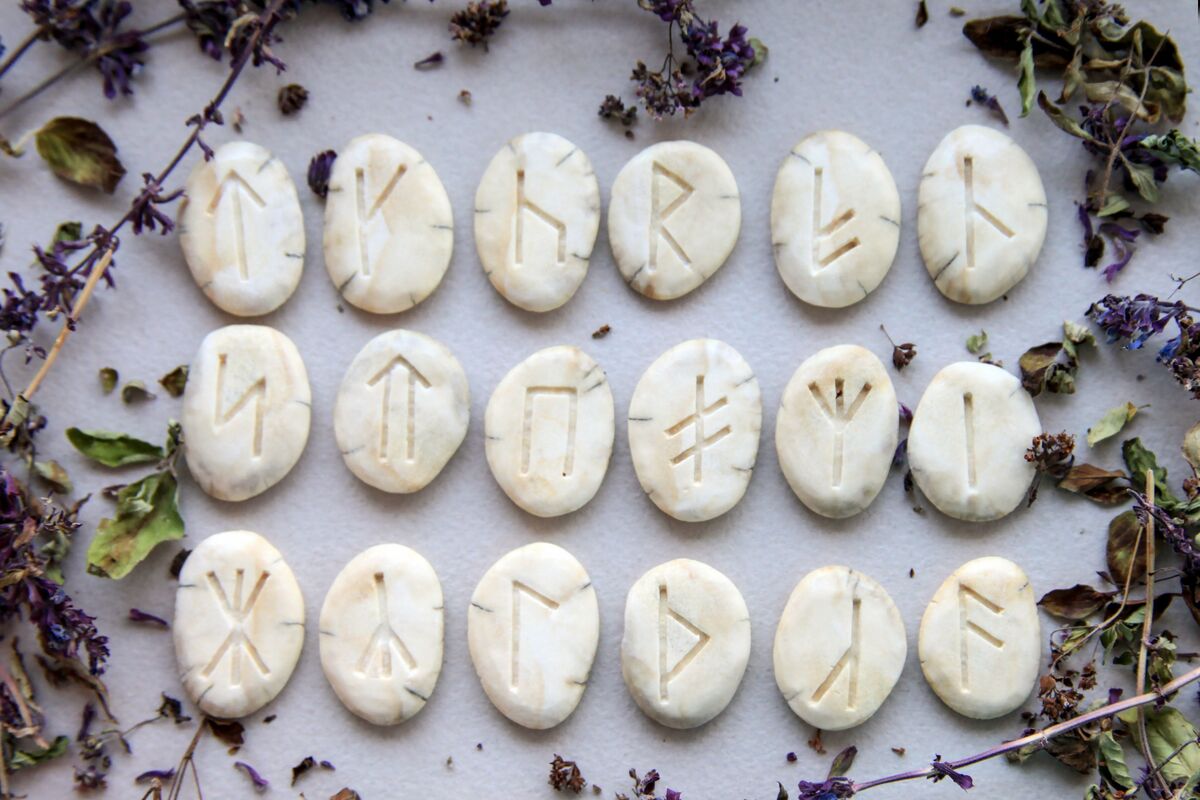
The third and last group of Runes is ruled by Tyr, god of justice and war of the Norse. Get to know his runes, their meanings and their symbologies below!
What is the third group?
The third group of runes closes Futhark. While the first group describes creation and the second group shows the forces of time, the third group gives an overview to human destiny.
In it, the divine figures act as guides and teachers, to show humans the path to evolution. Initiated by the rune associated with the god Tyr, this third and final group is composed of the runes Tiwaz, Berkana, Ehwaz, Mannaz, Laguz, Inguz, Dagaz and Othila.
Runa Tiwaz
Tiwaz is the first rune of the third group. As its name suggests, it symbolizes the god Tyr and therefore represents bravery, courage, strength, honor, leadership, perseverance, rationality, endurance, victory, overcoming, leadership skills, and authority.
In addition, Tiwaz also indicates self-knowledge, especially related to sacrificing part of oneself to achieve great things, as did the god ruled by this rune. But when it is in the inverted position, Tiwaz indicates fears, energy blockage, over-analysis, coldness, demotivation and imbalance.
Runa Berkana
Berkana is the rune of fertility and new beginnings, represented by a birch tree. When it appears, it indicates gestation, birth, abundance and multiplication. As a symbol of fertility and creation, Berkana is associated with creation, pregnancy, new beginnings and projects, and the energy of renewal.
It also symbolizes physical and emotional growth, besides containing in itself regenerative powers that indicate new beginnings. In the inverted position, Berkana points to family problems and issues related to anxiety, infertility, scarcity and even abortion.
Runa Ehwaz
Ehwaz is the third rune of the Tyr group and its name means horse. It represents a period of gradual change, probably aided by someone, so it is connected to friendship, aid, trust, loyalty, duality, harmony, instincts, movement and gradual change.
When it appears, Ehwaz can signify teamwork, as well as representing the instinctive nature. For this reason, it is compared to the Lovers card in the Tarot. When it is in the inverted position, Ehwaz signifies desire for change, restlessness, mistrust, disharmony and even betrayal.
Runa Mannaz
The rune which represents humanity is Mannaz, so it is closely linked to identity and interpersonal relationships. When it appears, Mannaz suggests the possibility of cooperation and touches on points such as morals, values and everything related to social order.
Mannaz is also a symbol of collectivity and the social and communal nature of people. But when it is inverted, Mannaz indicates falseness, isolation, manipulation, selfishness and disillusionment with people close to you.
Rune Laguz
Laguz is the rune that represents the element of water. Consequently, it is related to intuition, dreams and emotions. It means psychic powers, mysteries, secrets and even the unknown and the underworld.
In addition, it can also signify healing, illusion, imagination, intuition, instinct, wisdom and even dreams. When it is in the inverted position, Laguz indicates poor judgment, lack of creativity, coldness, fear, illusion, confusion and evasion.
Runa Inguz
Inguz, or Ingwaz, is the sixth rune of the third group. It represents fertility and courage and is related to the god Frey. When it appears, Inguz points to issues such as virility, harmony, peace, inner growth, male fertility, common sense, well-being, strength, family, rest, or outcome.
Runa Dagaz
The seventh and penultimate rune of the third group is Dagaz. Its name means day, and it therefore represents the dawn. When it appears, it brings more clarity and marks the end of a stage and the beginning of a new cycle. It is a rune that indicates time and short-term changes.
Dagaz is associated with new beginnings, the awakening of consciousness and a phase of optimism. In addition, it symbolizes hope and can be interpreted as a moment of security and certainty. For this reason, Dagaz is associated with the Tarot card The World. Dagaz has no inverted position.
Runa Othila
Othila is the eighth rune of the third Aett and finalizes Futhark. It is a symbol of spiritual and cultural heritage as well as representing prosperity. Othila is associated with abundance, contribution, spiritual growth and core values, aligning primarily with the energy of truth.
However, when it is in the inverted position, Othala signifies the negative side of cultural heritage and points to themes such as prejudice, traditionalism, bad luck, closed mindedness, ignorance and fundamentalism.
How do the Runes predict our future?
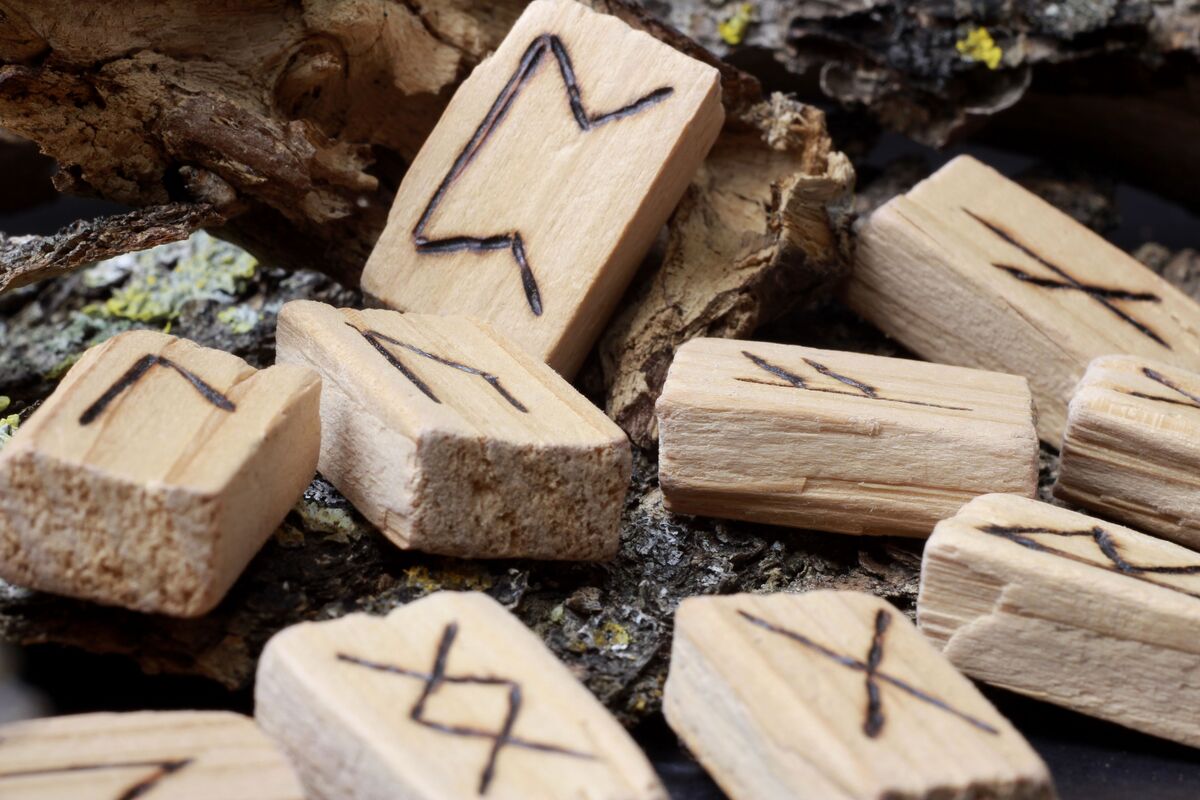
The runes predict our future, aligning us with our intuition through their ancient symbols. Each letter/symbol present in this alphabet is endowed with a cultural and symbolic wealth which was granted to humans thanks to the god Odin, the Father of All.
By using them, you will have access to representations of sounds and concepts that, when interpreted correctly, will serve as keys that will open your mind to receive the proper messages.
In addition, runes also function as bridges to the nine different spheres of reality that are present in the tree of life, Yggdrasil. Consequently, they are a reliable source of connection to the spiritual world.
In this way, by accessing the different spheres of reality, you will be able to unveil the veil of the future and will be able to shape and forge your own path using this powerful sacred code!

